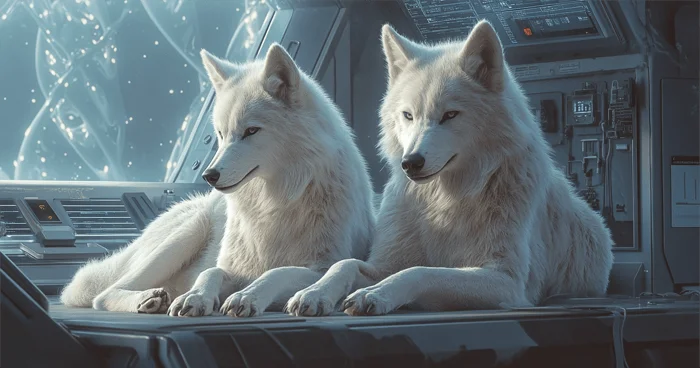
The De-Extinction Debacle: A Questionable Future for Biodiversity
The recent claims of de-extinction by Colossal Biosciences, heralded as a groundbreaking scientific achievement, have triggered a whirlwind of excitement and skepticism. The company asserts that they have successfully created genetically engineered pups resembling the long-extinct dire wolf, a species that mysteriously vanished approximately 13,000 years ago. While the announcement has made headlines, it raises significant ethical and ecological questions that scientists, conservationists, and Indigenous communities must grapple with.
Colossal's announcement touted the dire wolf pups as the world’s first de-extinct animals, embellished by the press release’s claims of meticulous genetic reconstruction. However, experts in paleogenetics have voiced concerns, suggesting that what has really been achieved is the creation of modified gray wolves with merely a few traits from their extinct relatives. Pontus Skoglund from Britain’s Francis Crick Institute expressed skepticism by reminding us that mere gene edits do not equate to full resurrection, stating, "Would a chimpanzee with 20 gene edits be human?"
Beyond the technical criticisms lies a deeper issue: the ethical consideration of reviving species and whether we should even attempt it. The dire wolf was a predator adapted to hunt now-extinct megafauna, raising questions about habitat availability and ecological balance. Where could these animals thrive? Conservationists warn that the resources devoted to resurrecting extinct species might better serve the global need to conserve endangered species currently on the brink of extinction. Funding one de-extinction project might detract from potential conservation efforts for species like the critically endangered Amur leopard or the Javan rhinoceros.
Ancient environmental dynamics would complicate the introduction of a newly engineered species to its ancestral environment. The ecosystems where these creatures once roamed have drastically changed, rendered largely inhospitable due to human activity. In Aotearoa New Zealand, where the resurrection of species like the moa is being discussed, Indigenous groups—the kaitiaki or guardians—have largely been left out of the conversation. Their perspectives are essential, particularly because they maintain an intimate connection to the land and species that have disappeared.

The involvement of Indigenous voices in conservation discussions is more crucial than ever. Their extensive knowledge of the intricate relationships between species and their habitats is invaluable. Additionally, many Māori have expressed their desire to see biotechnology funds allocated to support existing endangered species rather than pursued for speculative de-extinction projects.
Ultimately, as we ponder scientific advancements in reversing extinction, we must also reflect on the fundamental goals of conservation: to safeguard populations in their natural habitats and promote biodiversity. Without a thorough understanding of ecological interplay and prioritizing the needs of current biodiversity, the concept of de-extinction risks becoming a distraction from addressing the pressing issues our planet currently faces.
As dialogues surrounding de-extinction evolve, one must ask: Should we focus our energy on resurrecting the lost—or rather, on preserving the threshold of life that is still with us? Let's engage in this crucial conversation and think critically about the pathways for conservation. We invite you to share your thoughts and engage with us in the comments below.